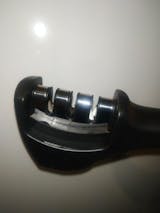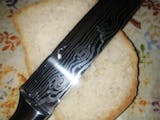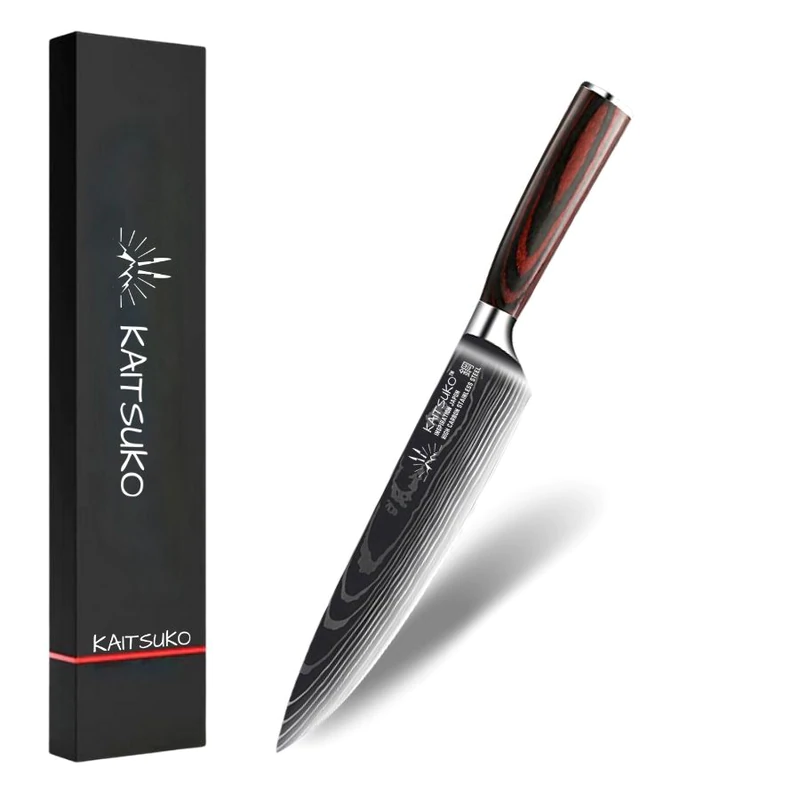
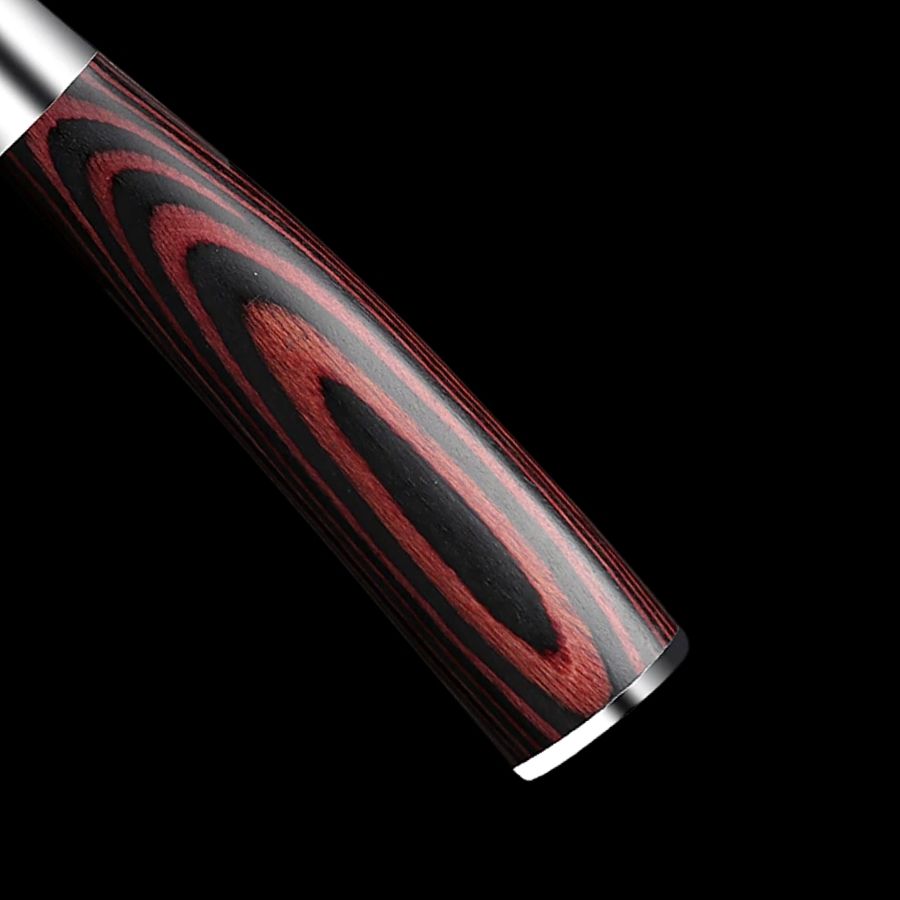
Chef’s knife - Collection Chef Tanaka Forest Wood
Discover also
Technical descriptions and specifications
Collection Chef Tanaka
Discover each knife from the collection Chef Tanaka.
These knives made of stainless steel are very light. They will allow you to quickly prepare your meal and they will bring a touch of sophistication to your kitchen.
These knives from Chef Tanaka collection are available in several colors.
The Chef’s knife is a multitasking knife. It will allow you to cut large piece of meat of fish, cut fresh herbs, peal vegetables, or even cut fruits.
See also our Chef’s knife - Collection Chef Tanaka Land of fire.
Chef’s knife

- Characteristics: Steel 7CR17
- Characteristics of the handle: Pakkawood
- Hardness of the steel: 58 ±2 HRC
- Weight: 200 grams
The laser engraving is a sublimation technique that we use only for Chef Tanaka collection.
Do you have a question? Take a look at our FAQ to find the answer! If you have another question, our Customer Service team will be delighted to answer you Monday to Friday at info@kaitsuko.uk.
CUSTOMER SERVICE
Contact us Monday to Friday from 8am to 6pm at info@kaitsuko.uk.
FAQ’s
The answer to all your questions HERE.
OUR MISSION
Our knives, designed by professionals, combine long-lasting sharpness, high-quality steel, and ergonomic non-slip wooden handles for comfortable and safe use.
Each blade is precisely forged, providing exceptional durability. Made from 7cr17 steel, renowned for its toughness, our knives offer outstanding cutting performance.
The wooden handles of the Chef Tanaka - Forest Wood collection add a touch of elegance and warmth to the design of the tools.
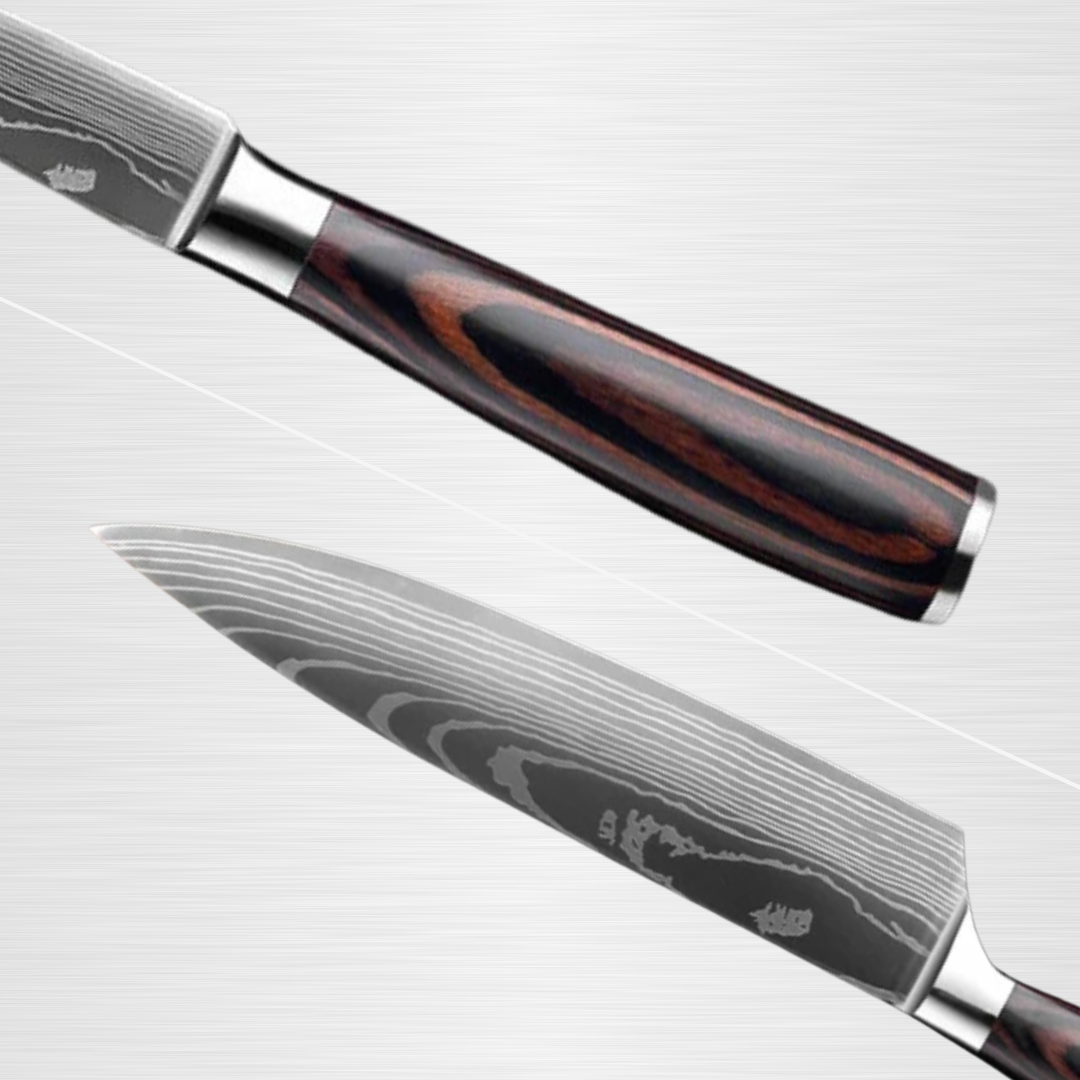
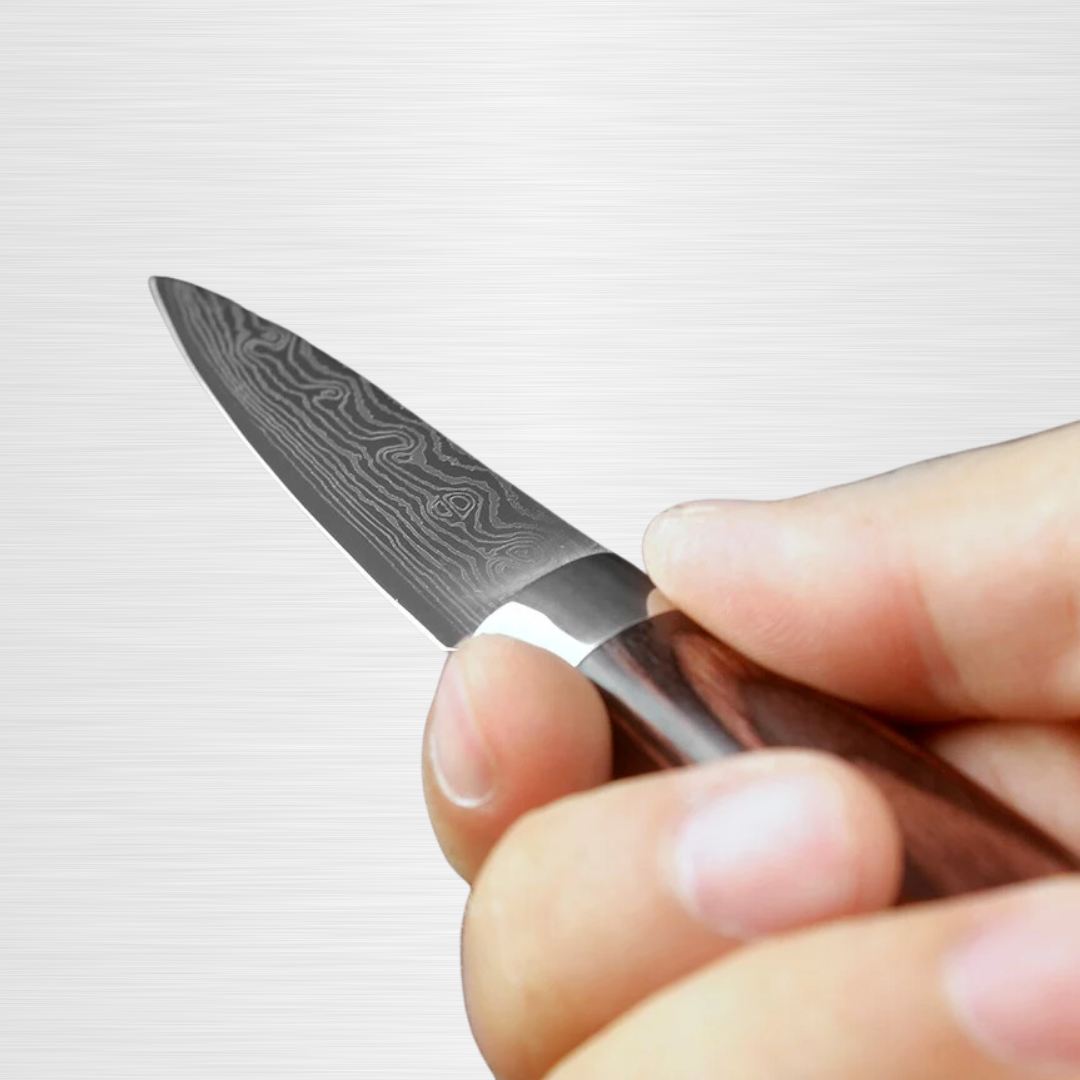
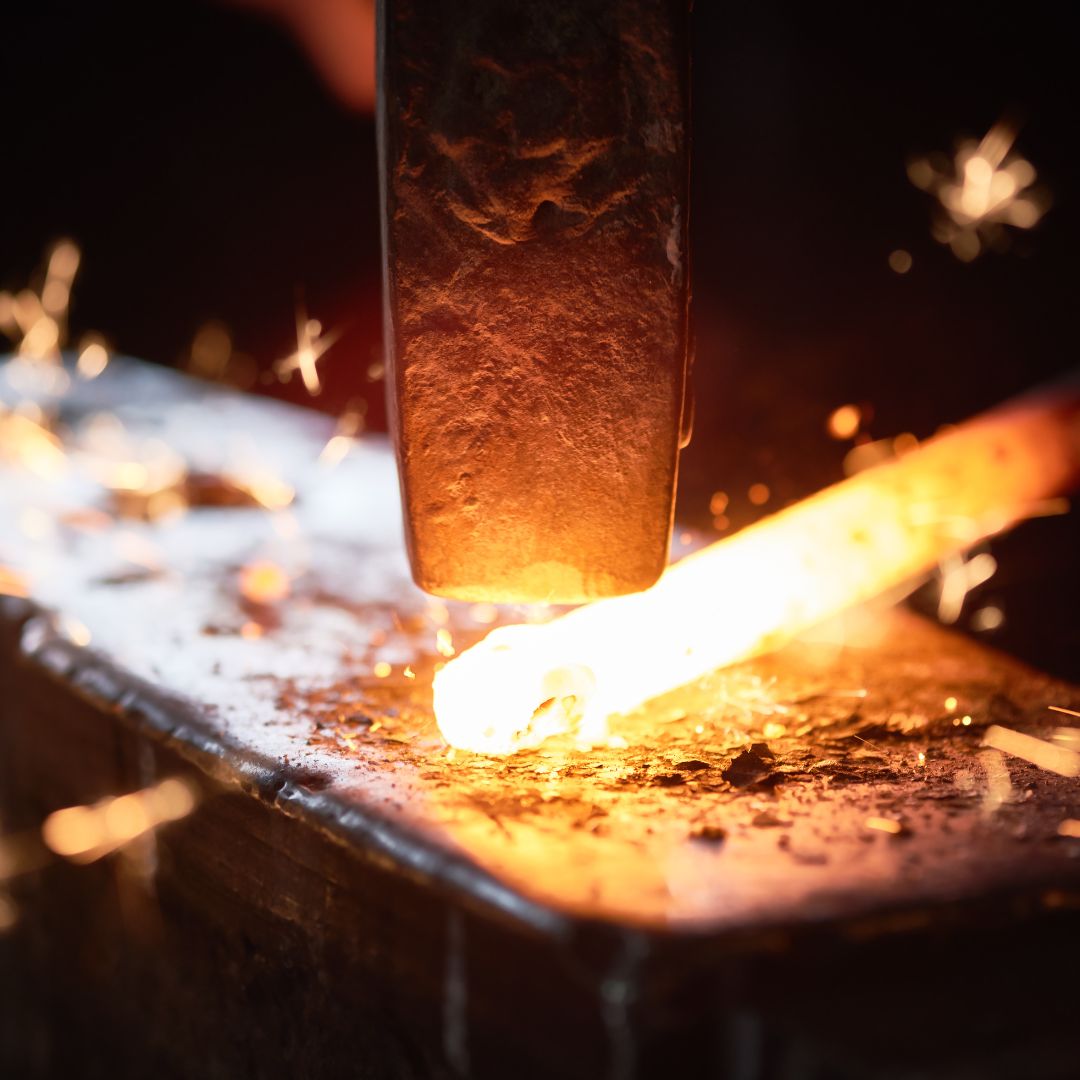
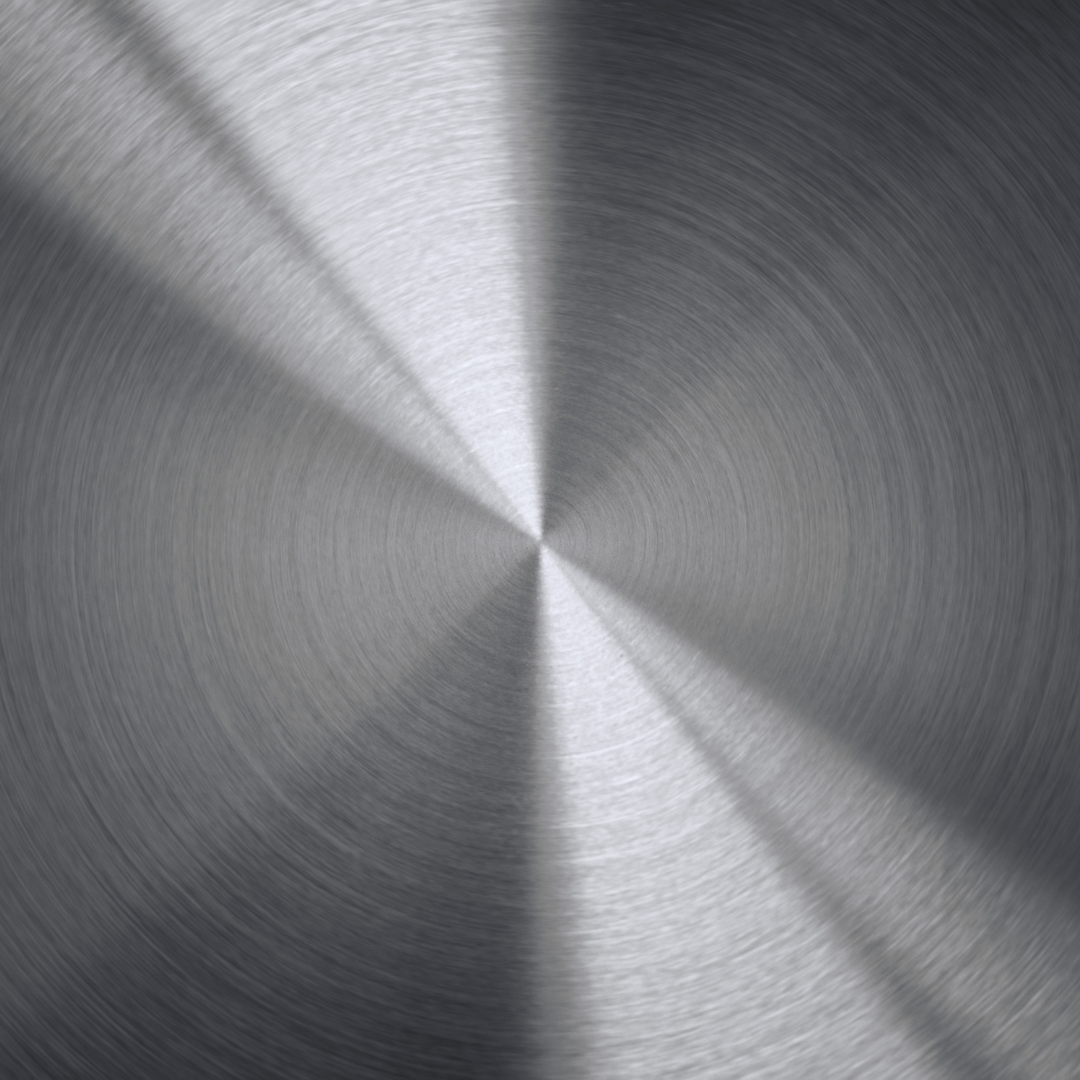
Find out more
The use of each knife
Kiritsuke knife: The Kiritsuke knife is a versatile knife that can be used for cutting various types of food. Its angled blade allows for precise cuts when slicing vegetables, meat, and fish.
Chef knife: The Chef's knife is a versatile tool characterized by a long, sharp blade and a fine point, allowing for precise and efficient cuts. It is an ideal knife for slicing, chopping, and mincing all types of food.
Carving Knife: The slicing knife is specifically designed to cut thin slices of meat, poultry, or fish. Its long and narrow blade allows it to glide easily through food, making precise cuts without tearing.
Bread knife: The bread knife is designed to cut through different types of bread without crushing or tearing them. Its serrated blade allows for clean slices through the crispy crust without crushing the soft interior.
Santoku knife: The Santoku knife is also a versatile knife, ideal for slicing, chopping, and cutting various foods. With a wide, straight blade and a rounded tip, it offers a large cutting surface. In short, this knife is perfect for performing multiple kitchen tasks.
Nakiri knife: The Nakiri knife is specialized for cutting vegetables. Its straight, rectangular blade offers a large cutting surface, making it ideal for chopping, slicing, and mincing precisely. It can also be used as a spatula knife to transfer vegetables to a dish.
Utility knife: The utility knife is versatile. It is designed to perform various tasks in the kitchen. Its size, which is between that of a chef’s knife and a paring knife, makes it perfect for medium-sized cutting tasks, such as slicing fruits, vegetables, cheese, peeling, or cutting food into small pieces.
Boning knife: The boning knife is specifically designed to remove meat from bones with precision. Its stiff and narrow blade allows it to follow the contour of the bones, reducing meat waste.
Paring knife: The paring knife is ideal for precision tasks thanks to its small size and short, pointed blade. It is perfect for peeling and cutting fruits and vegetables, as well as for making delicate cuts. Versatile and easy to handle, the paring knife is often used for detailed work that requires great precision. Whether removing seeds from fruit, hollowing out tomatoes, or chopping herbs, this knife is an indispensable companion for both amateur and professional chefs.
Knife Maintenance
- Never put knives in a dishwasher.
- Hand wash knives and thoroughly dry the blade with a soft, dry cloth to maintain the blade's sharpness and quality.
- Clean the blades with soapy water.
- If the knives have wooden handles, dry them thoroughly before storing them.
- Knives do not stay sharp forever, regardless of the blade; it is therefore recommended to sharpen them as soon as the edge becomes less sharp.
- Do not use the knife's edge to push food on the cutting board. Prefer using the back of the blade instead.
- Never use the abrasive side of sponges to clean the blades.
- Cut food on a wooden cutting board to avoid damaging the knife blade.
- Do not cut food in a pan or baking dish to prevent damaging the knife blade.





